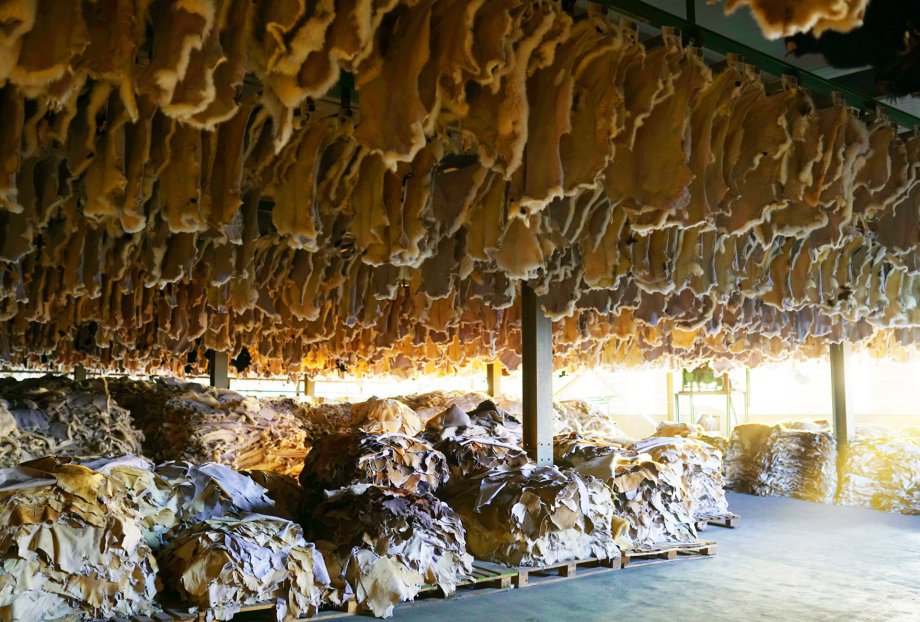Sheepskin Tannery
Sheepskin Tannery
The sheepskin industry in Turkey is well-known. Many products made here come from sheep's skin. This natural material has many advantages, which is why people have used it for a long time. The leather industry in Turkey started in the 12th century. In 1453, when the Turks took control of Constantinople (now called Istanbul), Fatih Sultan Mehmet decided to create the first leather manufacturing business in Kazlıçeşme. Since then, the Turkish leather and sheepskin industry has become one of the top in the world.
Sheepskin Tanneries in Turkey
Leather and sheepskin businesses in Turkey are very connected to each other. The most common material used to make leather products is sheepskin. Turkey is the second biggest producer of sheepskin in Europe, following Italy. There are 13 industrial areas in Turkey where they make products from sheepskin. The largest ones are located in Tuzla, Usak, Izmir, Corlu, Bursa, Kula, and Gerede.
The process of turning animal hides and skins into leather is called tanning. A tannery is a place where animal hides are treated. Tanning skin or hides into leather is a process that changes the skin's protein structure. This makes the leather stronger and less likely to rot. It can also change the color of the skin if desired. Before tanning, the animal skins are shaved, washed to remove salt and grease, and soaked in water for 6 hours to 2 days.
The Advantages of Sheepskin
- People have used sheepskin for a long time to stay warm. But our ancestors didn't just use sheepskin because more and more people realized that it has special qualities that other common materials lack. Here are the advantages of sheepskin:
- Sheepskin is a special and flexible material. It doesn't change temperature easily, so it's not affected by outside weather..
- The material is put together in a way that helps it maintain its temperature, no matter how hot or cold it is outside.
- Sheepskin usually helps keep your feet at a comfortable temperature, whether it's hot or cold outside. This means that when you wear sheepskin, it helps keep your body temperature comfortable all day. Because of this, sheepskin shoes can be worn all year round.
- Sheepskin is soft, warm, and really nice to wear. It doesn't bother even the most sensitive skin. It keeps you warm in the winter and cool in the late spring. The lanolin in sheepskin is similar to what we have in our skin. It helps soothe irritated or sensitive skin and rashes.
- Sheepskin keeps moisture twice as long as cotton. The moisture goes through the material and eventually disappears, keeping the item dry.
- The material is really soft and helps get rid of bad smells from sweat and oils produced by our bodies. It also fights bacteria. The sheepskin keeps dirt away and stays clean.
Sheepskin makes a difference.
According to a report in The Lancet, a British medical journal, sheepskin has a soothing effect. Sure Please provide the text you would like me to simplify. Stephen Scott and his team at Cambridge University Hospital worked with 34 premature babies, each weighing less than 2. 5 They decided to put half of the babies on sheepskin. What happened next was that 12 out of the 17 babies on sheepskin gained weight faster than 14 out of the 17 newborns on cotton sheets. Why get a reward from sheepskin. At first, people thought that babies on sheepskin would move around less and use less energy. It turned out that both groups of children were just as active. This led the researchers to think that the reason might be that sheepskin felt more comforting to the babies than cotton, which helped reduce their stress.
Sheepskin is more comfortable.
Experiments and natural observations show that things made from sheepskin provide more comfort to people than other materials. We all choose sheepskin shoes to keep our feet warm in winter. However, sheepskin has a special quality that makes your shoes or boots good to wear all year round. They keep your feet cool and dry in the summer and warm in the winter. That said, these features are only found in shoes made from real sheepskin. Shoes made from cheaper materials that are claimed to be sheepskin won't keep your feet warm in winter or cool in late spring. So, make sure you buy real sheepskin to get these benefits.
What is the tannery process?
Tanning is the method of turning animal hides or skins into leather, making it stronger and less likely to break down. This process uses substances like chromium salts to keep and strengthen the fibers in animal skin. The tanning process has several steps: soaking, deliming, bating, pickling, tanning, and finishing.

